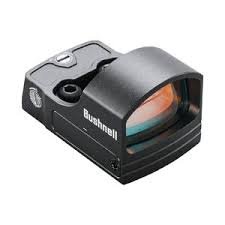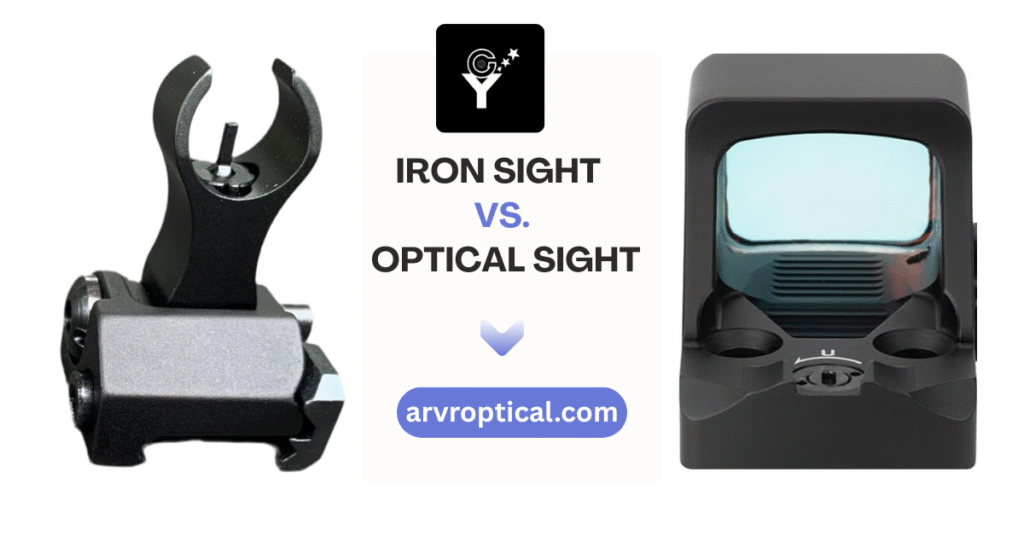Choosing the right gun sight can completely change your shooting accuracy and experience. Whether you’re a beginner or a seasoned marksman, understanding how iron sights and optical sights differ will help you shoot more confidently and efficiently.
Iron Sight vs Optical Sight
In this article, we’ll explain what makes each sight unique, discuss their advantages and disadvantages, and help you decide which one suits your shooting style. By the end, you’ll have a clear understanding of which gun sight setup works best for your needs.
What Is an Iron Sight?
An iron sight is the oldest and most basic aiming system found on firearms. It typically has two parts:
- Front sight post: Located near the muzzle.
- Rear sight notch or aperture: Positioned closer to the shooter’s eye.
To aim, you align the front and rear sights with your target.
Advantages of Iron Sights
- Highly reliable: No electronics or batteries needed.
- Durable: Made from metal and built to last under any condition.
- Budget-friendly: Included on most standard firearms.
- Teaches fundamentals: Ideal for beginners learning sight alignment.
Limitations of Iron Sights
- Difficult to use in low-light or nighttime situations.
- Slower aiming speed compared to optical sights.
- Less accurate for long-range shooting.
What Is an Optical Sight?
An optical sight uses lenses, mirrors, or holographic projections to make aiming faster and more precise. These sights display a reticle or red dot, helping you focus on your target without perfect alignment between front and rear sights.
Main Types of Optical Sights
- Red Dot Sight: Best for close to medium range and fast targeting.
- Holographic Sight: Projects a holographic reticle that stays centered even if you move your head slightly.
- Telescopic (Scope) Sight: Offers magnification for long-distance accuracy.
Benefits of Optical Sights
- Faster target acquisition: Simply place the dot or reticle on the target.
- Enhanced accuracy: Great for long-range shooting.
- Better visibility: Works well in poor lighting or bright sunlight.
- User-friendly: Easy to learn, even for new shooters.
Drawbacks
- Battery dependence: Some models require regular power checks.
- Higher cost: More expensive than basic iron sights.
- Maintenance required: Needs periodic calibration and careful handling.
| Feature | Iron Sight | Optical Sight |
| Technology | Manual alignment | Lens or holographic system |
| Accuracy | Moderate | High, especially at range |
| Speed | Slower | Faster |
| Durability | Extremely strong | More delicate |
| Cost | Low | Medium to high |
| Low-Light Performance | Poor | Excellent |
| Maintenance | Minimal | Needs regular adjustment |
Which Gun Sight Should You Choose?

Your choice depends on your shooting purpose and environment.
Go for Iron Sights If You:
- Prefer traditional setups.
- Shoot mostly at short range.
- Need a backup for your optical sight.
- Value simplicity and durability over advanced tech.
Choose Optical Sights If You:
- Want faster aiming and better accuracy.
- Shoot in low light or outdoor conditions.
- Regularly engage targets at medium to long range.
- Prefer a modern, tactical setup.
Pro Tip: Many shooters use a hybrid setup, an optical sight for speed and an iron sight as a reliable backup.
Common Myths About Gun Sights
Let’s clear up a few popular misconceptions:
- Myth 1: “Optical sights replace iron sights completely.”
→ False. Iron sights remain crucial as backup options.
- Myth 2: “Only professionals use optical sights.”
→ False. Affordable models are perfect for beginners too. - Myth 3: “Iron sights are outdated.”
→ False. They are still standard on modern firearms due to reliability.
Firearm instructors agree that mastering both iron and optical sights builds versatility. Studies show that optical sights improve target acquisition speed by up to 30%, while iron sights perform better in extreme conditions without battery dependence.
Having both in your shooting setup ensures you’re prepared for any environment — from tactical use to hunting or competition shooting.
Maintenance Tips for Both Sight Types
Regular maintenance keeps your gun sight accurate and dependable:
- Clean your sights regularly with a microfiber cloth.
- Avoid touching optical lenses directly.
- Store your firearm in a padded, moisture-free case.
- Replace batteries in optical sights on schedule.
- Recalibrate optics every few months for consistent accuracy.
Understanding the difference between iron sights and optical sights helps you choose the right gun sight for your shooting needs. Iron sights are rugged, affordable, and perfect for close-range practice. Optical sights, on the other hand, deliver speed, visibility, and precision that modern shooters prefer.
No matter your choice, the key is knowing how each system works and maintaining it properly. With the right setup, you’ll shoot faster, aim better, and perform more confidently every time.

